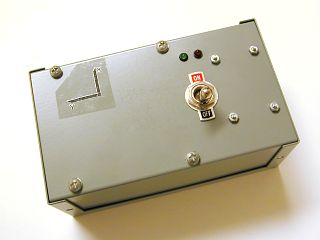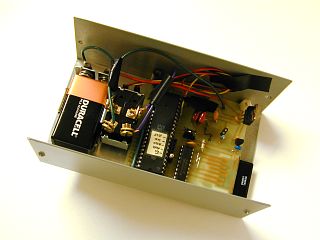 |
 |
The lengths of the pulses are measured by an Atmel AT89S8252 microcontroller which saves the data onto an 8MB Multimediacard through an SPI interface. Each reading of both axis together requires 6 bytes of storage.
The accelerometer is set to have a bandwidth of approximately 100Hz. Both axes are sampled at about 273Hz. At this rate, the memory card can store about 1.3 hours of data. The data is stored with a resolution of about 1 mg. At this bandwith, the chip should yield an RMS noise figure of about 6 mg.
 |
 |
If you're really interested in the details of this thing, check out the two links below. The first includes a rough schematic of the circuit board layout and the briefest description of how it works. It also includes the assembly language routine loaded into the microcontroller. The second includes the schematic for the Multimediacard reader used to download the data to a PC. It includes source code listings for using the reader and for converting the downloaded data into actual accelerations. This is far from a polished product and, as you'll see, I really have no clue what I'm doing. Maybe it will give someone who does know what they're doing some ideas, though.
| Return to Home Page | Latest update: October 9, 2001 |